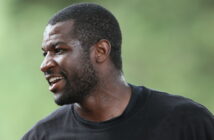This article was originally published by Carla C. Whyte on Medium.
I transitioned from classroom teaching to a remote role in Customer Success in approximately three months. My role was ‘no-code’, meaning I did not need to learn to code in order to be considered for it. I’m naming that my role was ‘no-code’ because there is still some confusion for many people not yet in “tech”, that “tech” is a role. By itself, “tech” is not a role — it is an industry. Much like other industries — healthcare, automotive, education — there are a multitude of roles that exist within it.
Marketing campaigns for educational programs and institutions, for example, will likely feature the faces and testimonies of beaming, prideful teachers, students, and principals. However, those same institutions still need executive assistants, operations staff, public relations teams, finance officers, etc to help it run effectively. The same is true within the tech industry. While there are certainly people who learn different coding languages, companies within the tech industry still need “no-code” professionals to process payroll, train new employees, negotiate contracts, market the business, etc.
So, to anyone reading this that aspires to secure a role in the tech industry, keep in mind that there are “code” and “no-code” roles. If you’re going after a “no-code” role like I did, you do not necessarily need to start throwing your entire paycheck at the courses and bootcamps you come across on TikTok, YouTube, or Twitter. Slow down!
At the onset of my search for a new role (November 2021), I also had zero knowledge of the possibilities available to me in the tech space because of my limited understanding of the industry. To be honest, I thought I would be an educator all my life so I never bothered to delve too much into anything outside of that. It took a high school friend who’d been at a FAANG company explaining to me that there were roles within the organizations she’d worked for, where my skills in teaching, training, and public speaking would be highly valued. I immediately hired a resume writer and started aggressively applying for remote roles at more software companies. In the process, I stumbled upon an event via LinkedIn titled “See if Your Resume Passes the 30-Second Test”. Eager to take advantage of as many free or low-cost resources as I could, I registered for the event. This is how I met Malinda Coler of Roadmap in January 2022.
At the one hour session, we learned from Malinda what our resume needed to contain in order to increase the likelihood that a recruiter would reach out for a phone screen. After she shared the criteria for success for a strong resume, we all analyzed a sample resume, then began to workshop each other’s resumes. When asked, “What would you all hire Carla for based on this resume?”, all of the participants said they’d feel confident hiring me as some sort of education consultant, teacher, curriculum consultant, dean, or principal. That was the moment I realized I was still marketing myself as an education professional — I didn’t want any of the positions they named, okay?!?!

The message was loud: I needed to sell a very different story while looking for new roles. Since participating in the job-search program at Roadmap, a 10-week program for career seekers looking for skills and coaching for a successful job-search, I continue to receive messages and questions from people on LinkedIn about my transition into tech. It’s worth mentioning here that while I did previously advise against blindly paying for expensive courses and bootcamps, my decision to join the Roadmap program was evidence-based, not impulsive.
The free workshop, where I received eye-opening feedback on my resume, sold me on the value of Roadmap. My job search strategy would need to be very different from how I conducted searches as a classroom teacher looking to stay in the school system, and it was clear that Roadmap would equip me with a solid toolkit. Even as I look for new opportunities now, I’m using everything I learned from the Roadmap program. For less than $100/month for 3 months (I snagged a holiday promotion), I obtained valuable information/tools/resources that helped me develop an elevator pitch, create a networking blurb for LinkedIn and other networking, I acquired a skills matrix, improved my resume-writing skills, got interview and negotiation tips, and so much more.
Below I’ll share what was most critical for me as I searched for new roles:
Assess your Skills, Interests, and Accomplishments
During the second session of Roadmap, we discussed how to talk about our accomplishments. As a teacher, especially because I didn’t teach a “tested” subject, I found it challenging to confidently name things that I accomplished. I learned that even if there were things I’d done that my school hadn’t recognized me for, they were still accomplishments. She asked me to tell her about some of the things I’d been involved in at the different schools where I worked. All of a sudden I had this list of achievements that I hadn’t even been highlighting on my resume at all! I planned trips, managed budgets, facilitated workshops for other adults, created and deployed a literary tool for students in my social studies class, increased test scores, and more! Why wasn’t I talking about those things?!?!
I think as teachers, we often don’t see ourselves outside of our teacher identity and we don’t realize how many of the things we do outside of the actual primary teaching function are impactful and transferable. The more I reflected on my accomplishments, the clearer I got on what I enjoy doing and what I am good at! I then used the ‘skills matrix’ from Roadmap to identify roles and domains aligned with my strengths and interests. That’s how I came up with Learning & Development, Customer Success, and Program Operations as the areas I wanted to focus on for my job search.
Use your Skills, Interests, and Accomplishments to Build a Targeted Strategy
Around November of 2021, I had a really bad panic attack in front of my students. I’d hit my breaking point and I urgently needed my situation to change. I began to apply for a multitude of jobs — whether I had a genuine interest in the company or industry was not my concern at the time. Eventually a recruiter reached out to schedule a phone interview with me for an Operations Coordinator role with a construction management company. I knew nothing about construction management but I didn’t care. When the interviewer asked me why I wanted to work for that particular company and why construction management, I said something along the lines of “teachers can do anything” and that “I was open to something new”. This is not going to impress any recruiter or hiring manager — let me just tell you that now. Even if I wasn’t truly interested in a career in construction management, I should have prepared a compelling response explaining my interest in transitioning into this new industry — even if it wasn’t my dream job!
Prior to that interaction, I’d only ever applied for roles in education, and because I had extensive experience in that domain, it wasn’t hard to be convincing or appealing in my interviews. I was also talking to other educators so they could fully relate to what I was sharing. Now though, I was a teacher trying to sell myself to non-educational enterprises. My storytelling would need to look and sound a lot different! Not only would I need to speak about my prior achievements, but I would also need to confidently and matter-of-factly convey how those achievements were aligned with the responsibilities outlined in these new, non-teaching roles.
With clarity on my strengths and accomplishments, I tailored my search to roles in the three domains discussed earlier. I looked at job descriptions for roles in Learning & Development, Customer Success, and Program Operations, and created a master resume for each domain. I highlighted my personal accomplishments as they pertained to each domain. For example, on my ‘Learning & Development Resume’, I focused on increases in student scores, using diagnostic assessments to create learning plans, developing curriculum, etc. On my ‘Customer Success’ resume, I barely talked about student learning — I focused on rates of program adoption, survey data, relationship-building, etc. Applying only for roles in these specific domains meant less time making major tweaks to my resumes, and less time sifting through vacancies.
Tell a Clear & Compelling Story
At my first Roadmap workshop, I learned that recruiters are busy! You only have a couple of seconds to sell them on paper and make them excited to reach out to you. Thus, your resume needs to tell them as clearly and plainly as possible why you’re a great fit. Do not rely on them to put the pieces of your puzzle together — it’s not their job!
As a teacher going after roles at software companies, I anticipated confusion and questions, even for “no-code” roles. As such, I made sure my resumes were tailored appropriately for the role, and I prepared notes of my own to go into greater detail about some of my achievements. I practiced talking about my achievements and their alignment to the role. With writing as one of my strengths, I also composed tailored cover letters for the positions I was really fired up about. I figured it could be a huge value-add for a recruiter or hiring manager that was on the fence about me. I typically included information from my networking blurb into my cover letters as well, so after a while, it was super easy to talk about myself in a magnetic and dynamic way to strangers.
Many people were also eager to learn about my journey and loved getting the inside scoop on my teaching adventures. I was only able to speak with such charisma and energy about everything because I practiced. I took advantage of mock interviews through Roadmap, but also, the real-life interviews that I was getting with different companies were also practice! There are some questions that recruiters and/or hiring managers are always going to ask you (‘Tell me about a time where you had to work with a customer/colleague that you didn’t get along with/was unpleasant’, for example). I have some juicy — but professional — stories ready for those and many other questions!

Network as Much as You Can
Especially when you’re “desperate” to land a new role, it can be very tempting to stay glued to the chair in your home office and fire off application after application in the hopes that your inbox starts lighting up. While applying is certainly a part of the process [for many], networking should not be neglected. There are many people who secured new opportunities simply from networking. It can be extremely valuable because:
Attending virtual and in-person events can be an opportunity to meet people that know of opportunities not yet advertised on public platforms; they might even refer you!You can learn new things related to an industry or job persona that you are looking to transition intoYou might meet people who are also on the search, and if it’s causing you any sort of grief, having that moral support can help tremendously
Take it from a person who was initially cooped up in the house miserable on her job search: staying inside does not help the job come faster! Go out there and talk to other people so that you don’t forget that you are a human being versus a human doing. Your mental health needs to be intact in order to sustain the job-search ride.
Make Time for Joy
As I said before, the job-search process can be grueling and mentally draining. From personal experience, focusing only on job-searching actually made me more miserable. Especially if you are a person living alone, in a city that you are not native to, the feelings of isolation are probably strong already; don’t exacerbate them by becoming one with your laptop. I urge you to take breaks for sunshine, for walking, journaling, bike riding…whatever your thing is. Sometimes I took walks around the pond near my apartment while listening to affirmations or uplifting podcast episodes. Sometimes I went for a bike ride. Other times, I consumed content on YouTube from my favorite channels for comic relief and it really made a world of difference.
All right. That’s all I have for now.
Good luck, friend. I’m rooting for you!
This article was originally published by Carla C. Whyte on Medium.



